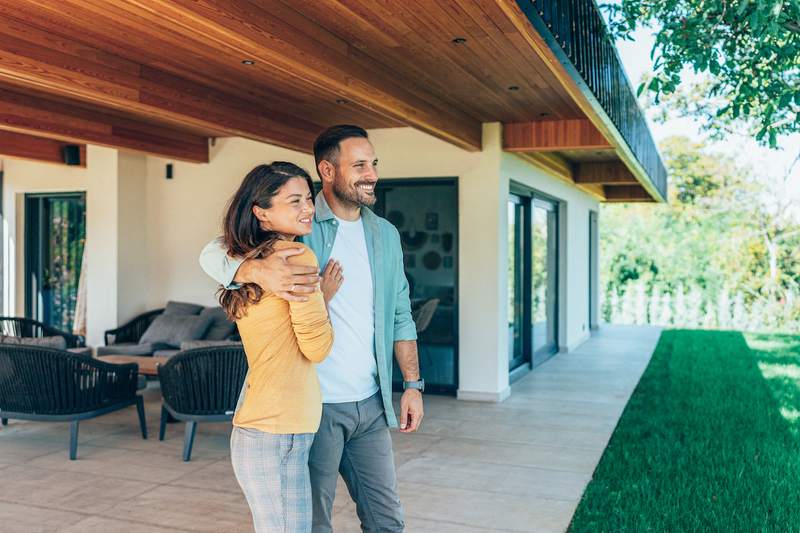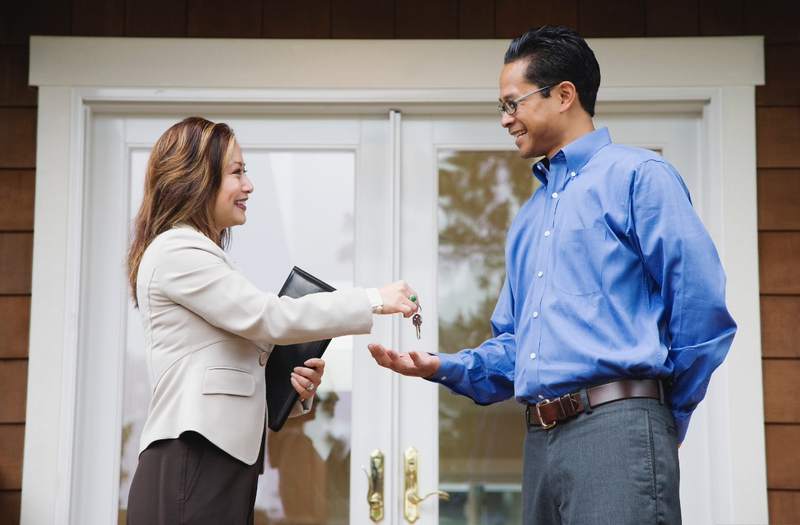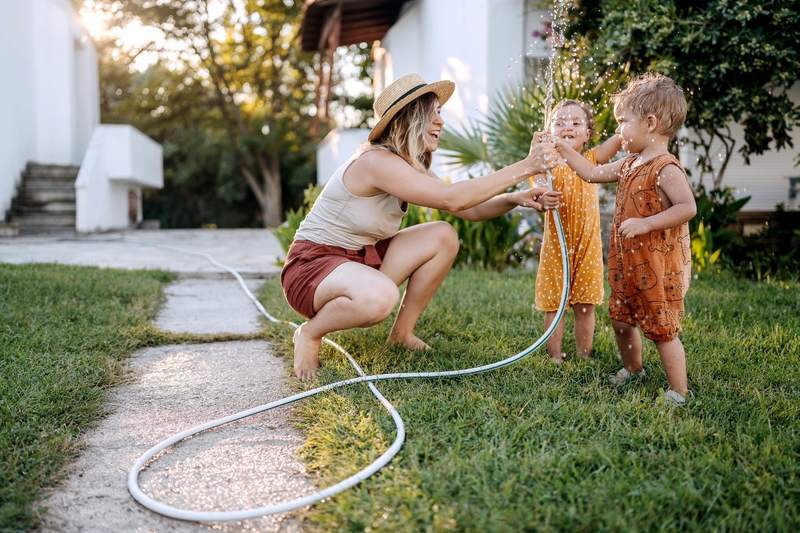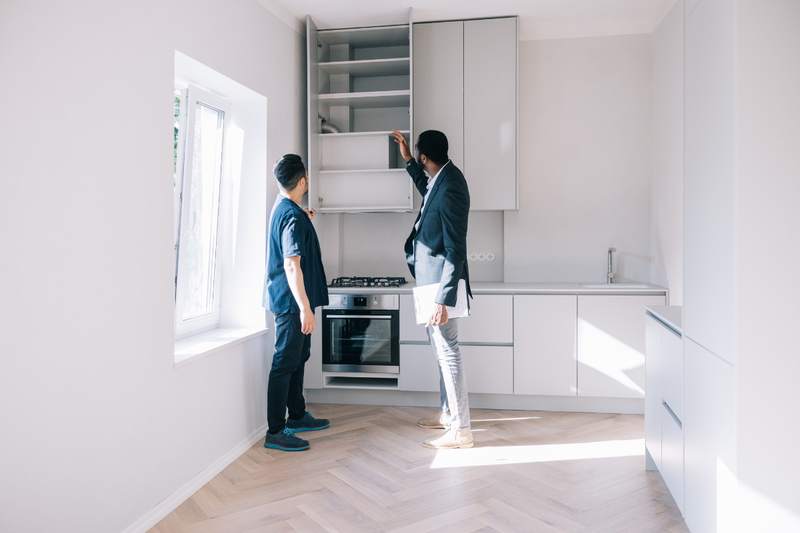Rising home prices have made it more difficult for aspiring buyers to afford a home. The national median sales price for new houses peaked at $479,500 in late 2022, falling slightly to $431,000 in late 2023 — though that’s still a 158% increase over the $273,600 average from the fourth quarter of 2013.
So, what does it take to afford a $500,000 home? How much income do you need? What does it really cost? Read on for answers.
Key Takeaways:
- To afford a $500,000 home, you’ll need enough saved up to afford a down payment and closing costs.
- You also need enough income to afford your monthly mortgage payment and the ongoing costs of homeownership.
- Even if you can’t afford a $500,000 home yet, understanding what you’ll need can help you plan ahead and become a homeowner sooner.
What You Need To Buy a $500,000 Home
The first step toward buying a $500,000 home is evaluating your overall finances to see how much house you can afford. That means taking a look at your income, how much debt you have, your monthly expenses, your credit score, and how much you have saved up for a down payment and closing costs.
“All of these elements interact to shape the overall affordability of a home purchase,” says Matthew Sanford, assistant vice president of mortgage lending at Skyla Federal Credit Union in Charlotte, North Carolina. “By carefully assessing and managing these factors, potential homebuyers can make informed decisions about the kind of house they can comfortably afford.”
Minimum down payment
One of the biggest obstacles to buying a home is saving enough for a down payment. How much you need to put down varies depending on the type of mortgage you apply for. If you’re taking out a conventional loan, you’ll need a down payment of at least 3% — though many lenders will require a down payment of at least 5%.
If you’re trying to buy a $500,000 home, then a 3% down payment would be $15,000 and a 5% down payment would be $25,000. If you want to avoid paying for private mortgage insurance, you’ll need a down payment of at least 20% — which would be $100,000.
Down Payment for a $500,000 House
| Percentage of the Purchase Price | Down Payment |
| 3% | $15,000 |
| 5% | $25,000 |
| 10% | $50,000 |
| 20% | $100,000 |
Closing costs
Closing costs are the fees you pay to close your loan and transfer legal ownership of the property to you. Closing costs usually range from 2% to 5% of the home purchase price. That means you can expect closing costs for a $500,000 home to total between $10,000 and $25,000.
Closing Costs for a $500,000 House
| Percentage of the Purchase Price | Closing Costs |
| 2% | $10,000 |
| 3% | $15,000 |
| 4% | $20,000 |
| 5% | $25,000 |
That means you would need between $25,000 and $125,000 saved up to afford a down payment and closing costs on a $500,000 home.
Saving up more means you can borrow less money, and you’ll likely get a lower interest rate on your loan. That will reduce the monthly payment and your overall interest costs.
Having less for the down payment and closing costs can get you into a home more quickly, but you’ll ultimately pay more.
Interest rate
The interest rate on your mortgage has a big impact on how much home you can afford. A lower interest rate means you’ll pay less for your loan than with a higher rate — or that you can borrow more money at the same cost as a smaller loan with a higher interest rate. Saving just a fraction of a percentage point on your interest rate can save you thousands of dollars over the course of your loan.
Your lender will base the interest rate it offers you on several factors, including your:
- Credit score. Borrowers with higher credit scores usually get lower interest rates.
- Down payment. Making a larger down payment reduces the amount you need to borrow and can help you get a lower interest rate.
- Loan term. A shorter loan term can get you a lower interest rate than a longer term.
- Loan type. Rates can vary depending on whether you have a conventional or government-backed loan.
- Points. If you buy points on your mortgage, then you pay more upfront in exchange for a lower interest rate.
Let’s say you buy a $500,000 home with a 5% down payment and a 30-year fixed-rate mortgage. That means your loan amount will be $475,000. With a 5% interest rate, your monthly payment would be $2,550 — but with a 7% interest rate, your monthly payment would be $3,160. For some borrowers, paying that extra $610 a month can be the difference between a mortgage you can afford and one you can’t.
Interest Rate on a $475,000 Loan
| Interest Rate | Monthly Payment |
| 5% | $2,550 |
| 6% | $2,848 |
| 7% | $3,160 |
| 8% | $3,485 |
Don’t forget: You have to pay for PMI on any conventional loan where the down payment is less than 20% of the purchase price.
Mortgage type
Lenders offer several types of mortgages, each geared toward borrowers with different situations. Finding the right loan type can help you afford the mortgage for a $500,000 home. These are common types of mortgages:
- Conventional loans are the most common loan type and cost less than Federal Housing Administration loans, but they can be more difficult to get.
- FHA loans are backed by the federal government and are available to borrowers with lower credit scores and smaller down payments.
- Veterans Affairs loans are available to eligible members of the military, veterans, and their surviving spouses.
- U.S. Department of Agriculture loans are available to low- and moderate-income borrowers buying homes in certain rural areas.
Mortgage requirements
To get a mortgage, you’ll need to meet the eligibility requirements. Here’s a look at the eligibility requirements for different loan types.
Mortgage Requirements by Loan Type
| Loan Type | Minimum Credit Score | Minimum Down Payment | Maximum Debt-to-Income Ratio | Fees |
| Conventional | 620 | 3%, or 20% to avoid PMI . | 45% | Closing costs vary by lender. |
| FHA | 500 | 3.5% if your credit score is above 580, or 10% if your credit score is between 500 and 579. | 43% | Closing costs, plus an upfront mortgage insurance premium up to 1.75% and an annual premium up to 1.05%. |
| VA | None | 0% | 41% | Closing costs, plus a one-time VA funding fee of 1.65% to 3.6%. |
| USDA | None, though 640 is recommended. | 0% | 41% | Closing costs, plus an upfront guarantee fee up to 3.5% and an annual fee up to 0.5%. |
| Jumbo | 680, but varies by lender. | 10%, or 20% to avoid PMI. | 45%, but can vary by lender. | Closing costs vary by lender. |
The Cost of Owning a $500,000 Home
After you’ve closed on the home and moved in, there are other recurring costs that will need to be factored into your budget. Some of these costs will be added to your monthly mortgage payment, while others will need to be paid separately.
“These costs encompass a wide range of expenses, including property taxes, homeowners insurance, regular maintenance, home improvements, and repairs, utility bills, homeowners association fees, pest control, home security services, landscaping and gardening upkeep, home warranties, and more,” Sanford says. “It’s important to note that the cost of these items often correlates with the size and value of your home, meaning that larger or more expensive homes typically entail higher hidden costs.”
Property taxes
Property taxes are collected by state and local governments to fund community services like roads, public schools, and police. The amount you pay in property taxes depends on the assessed value of your home and your local tax rate.
Property taxes vary widely by location. For example, the median property tax bill in Alabama is $646, while the median property tax bill in New Jersey is $8,797. Many mortgage calculators will estimate your property taxes, so be sure to use one that factors in your ZIP code to get a better idea of how much you’ll owe in property taxes.
Most homeowners pay their property taxes with an escrow account, which adds a prorated estimate of the annual cost to your monthly mortgage payment. The lender then uses the funds collected in escrow to pay your property tax bill on your behalf.
Insurance
Homeowners insurance pays for losses and damage to your home and belongings in the event of a disaster — like a fire or theft. A typical homeowners insurance policy also includes liability coverage for injuries or property damage caused by you or your family.
The cost of this coverage depends on your home, location, coverage limits, and provider. According to a November 2023 Forbes analysis, the average cost of homeowners insurance for a $500,000 dwelling is $2,090 per year.
As with property taxes, most homeowners pay into an escrow account a prorated estimate of their annual insurance premium added to their monthly mortgage payment.
PMI
If your down payment on a conventional loan is less than 20%, then you’ll need to purchase PMI. This type of insurance protects the lender — not you — if you become unable to make your mortgage payments.
Your PMI premium is paid monthly and is typically added to your mortgage payment. You can expect PMI to cost 0.2% to 2% of your loan amount each year. On a $475,000 loan, that would be between $950 and $9,500 — equivalent to $79 to $792 a month.
Homeowners association fees
If the home you’re buying belongs to a homeowners association, then you need to pay HOA dues and fees. HOAs collect funds to pay for shared services and amenities in a community. While this typically applies to units in a condominium complex, it also can apply to subdivisions or neighborhoods.
HOA fees commonly pay for maintenance of shared amenities, such as park areas, pools, or parking facilities. The cost of HOA fees depends on the services provided. You may need to pay HOA dues on a monthly, quarterly, or annual basis. According to the U.S. Census Bureau American Housing Survey, the national average HOA fee is $170 per month.
Maintenance
Once you become the owner of the home, you’ll be responsible for all routine maintenance and emergency repairs. It’s typically recommended that you set aside between 1% and 4% of the value of the home each year to cover maintenance.
Utilities
Don’t forget you have to pay your utilities. According to EnergyStar.gov, the average annual energy bill for a single-family home is $2,060.
How Much Income Do You Need?
Now that we know what it costs to buy a $500,000 house, the next question is how much income do you need to afford it? Let’s use the earlier example of a 30-year fixed-rate mortgage with a 6% interest rate and a monthly payment of $2,848.
The 28/36 rule
According to the 28/36 rule, your housing costs should take up no more than 28% of your income, and no more than 36% of your income should go toward paying off debt.
If your monthly payment for principal and interest is $2,848, then you can multiply that number by 12 to determine that your mortgage will cost $34,176 annually. For that figure to equal 28% of your gross income, you would need to earn $122,057 a year.
Your total minimum debt payments under this rule should be no more than 36% of your income, or $42,941. That means you could afford $9,765 a year in debt payments beyond your mortgage, which comes to $814 a month.
Put all that together, your monthly expenses for housing and minimum debt payments would come to $3,662 on a gross monthly income of $10,171.
Cash reserves
In addition to verifying your income, lenders typically like to see cash reserves. It’s not uncommon for lenders to ask that you have enough cash reserves to cover your mortgage payment for six months. Using the same example of a mortgage with a $2,848 monthly payment, you’d need $17,088 in cash reserves.
Tips for Affording a $500,000 Home
If you’d like to buy a $500,000 home but aren’t quite ready, here are some steps you can take to help make that goal a reality.
Save for a larger down payment
If you hold off on buying and focus on saving up a larger down payment, it can help you save money on your mortgage. A larger down payment can help you score a lower interest rate, which will lower your monthly payment and overall costs. If you make a down payment that’s at least 20%, then you won’t have to pay for PMI, which also will make your mortgage more affordable.
That may seem like a tall order on a $500,000 home. But there are ways to save for a down payment, as well as various down payment assistance resources for first-time homebuyers that you may qualify for. You also may be able to borrow from your 401(k) or other retirement savings.
Improve your credit score
Your credit score has a big effect on the interest rates that lenders offer. If you can boost your credit score, it may get you a lower interest rate on your mortgage and make the payments on a $500,000 home more affordable. You also should review your credit report for errors, and report any mistakes you find to the credit bureaus.
Earn more money
Sure, it’s easier said than done to just make more money — but buying a home might be the motivation you needed to work on getting a promotion or raise. You also could consider a side hustle like freelance work or rideshare driving. You may not have time for a part-time job, but earning extra income here and there can add up and help you afford a larger down payment.
FAQ: Affording a $500,000 Home
Here are answers to common questions about affording a $500,000 home.
The interest rate that lenders will offer you will vary depending on your financial situation, the details of your home purchase, and market conditions. As of Dec. 20, 2023, the average mortgage interest rate for a 30-year fixed-rate mortgage was 6.95%.
Being “house poor” means your housing costs take up too much of your income. If this applies to you, chances are you bought a home you can’t afford.
Property values range based on a number of factors, including location, size, and condition. As of December 2023, the median sales price for a new house was $409,300.
The Bottom Line on Affording a $500,000 Home
In order to buy a $500,000 home, you’ll usually need to be able to make a down payment and pay your closing costs. The amount you’ll pay each month for your mortgage will vary depending on your interest rate, down payment size, and loan type. Beyond your monthly mortgage payment, you’ll also need to be able to cover the other recurring costs of homeownership.
Getting a home loan with favorable terms can help reduce the cost of your mortgage. So, while you save up to make that down payment, you can also work on building good credit to help you score a lower interest rate when it’s time to buy.






